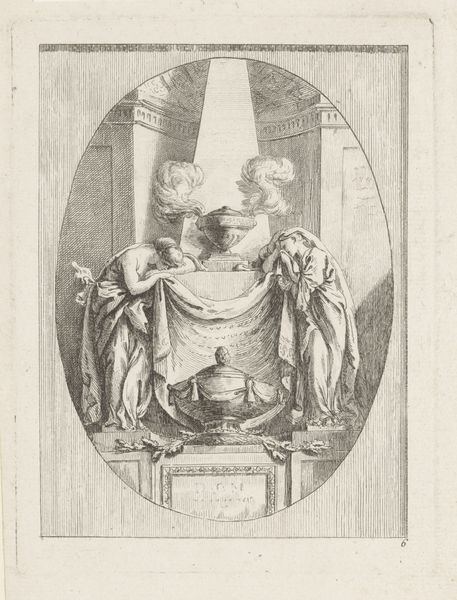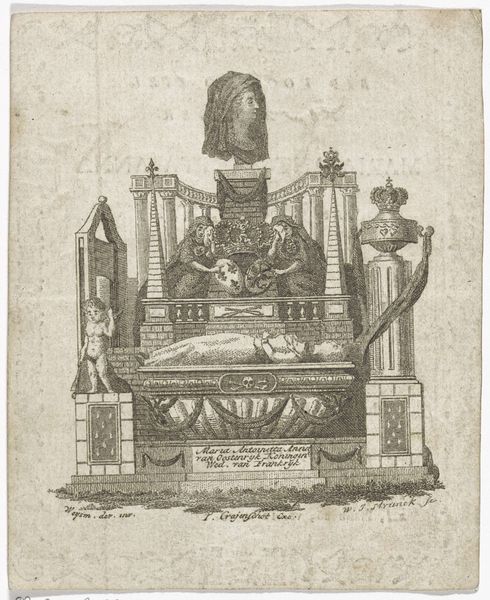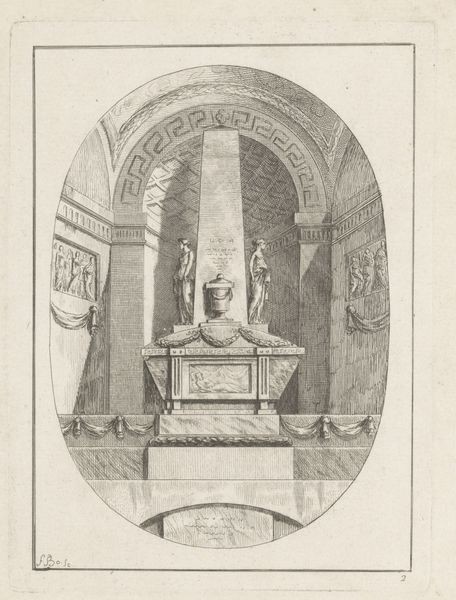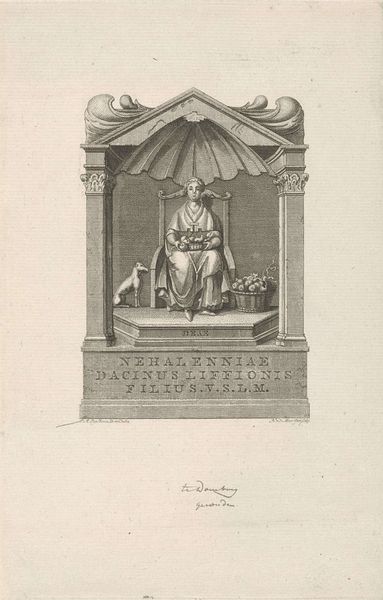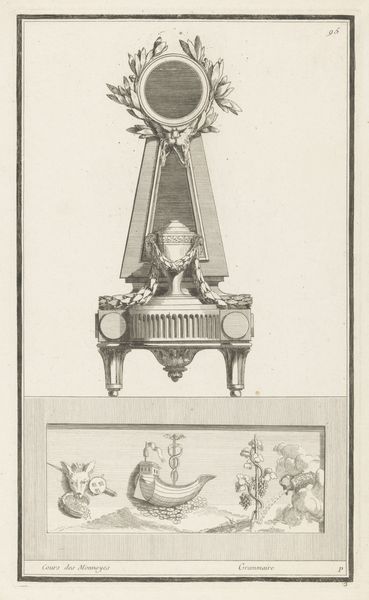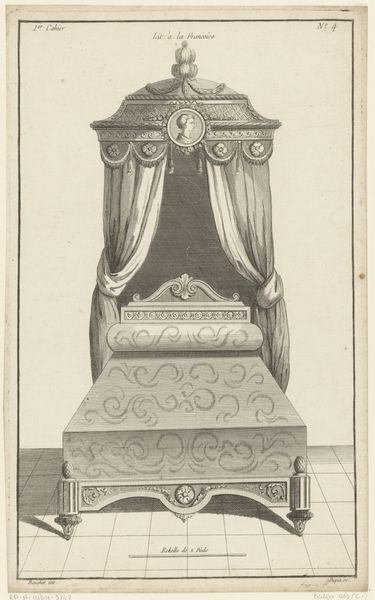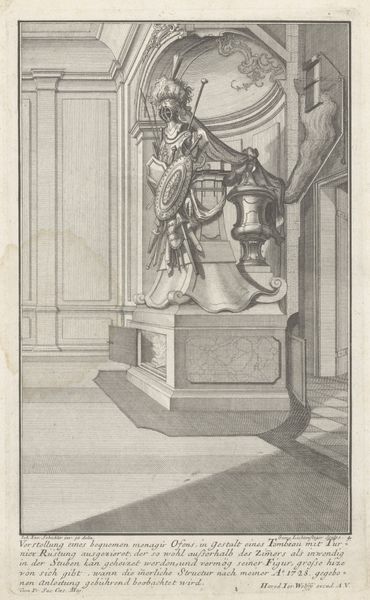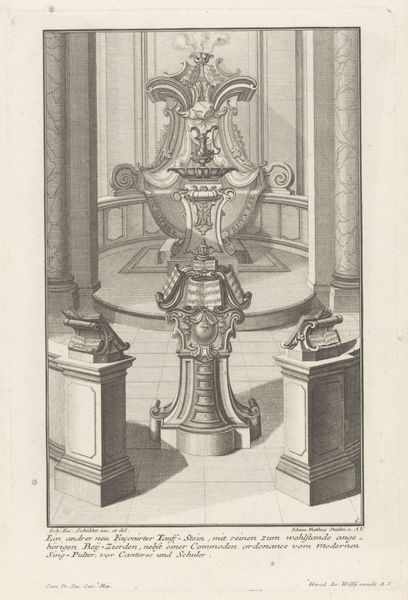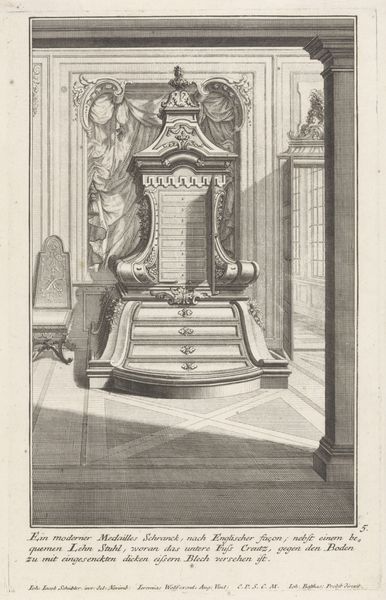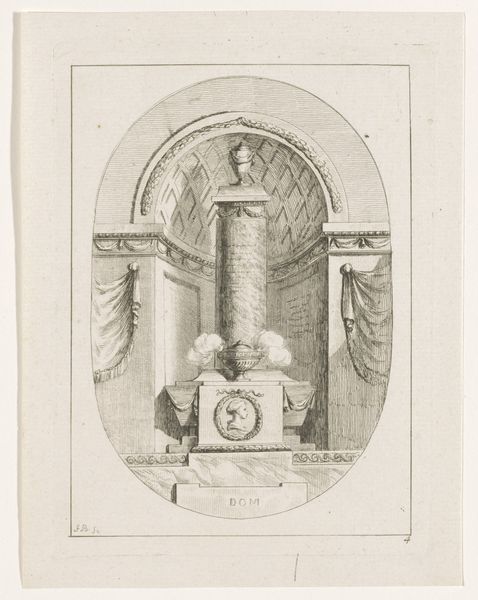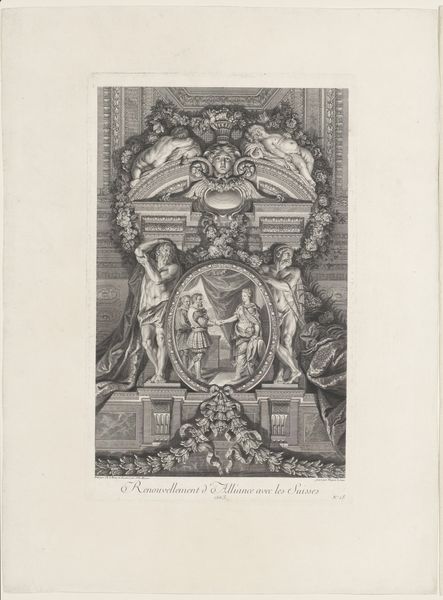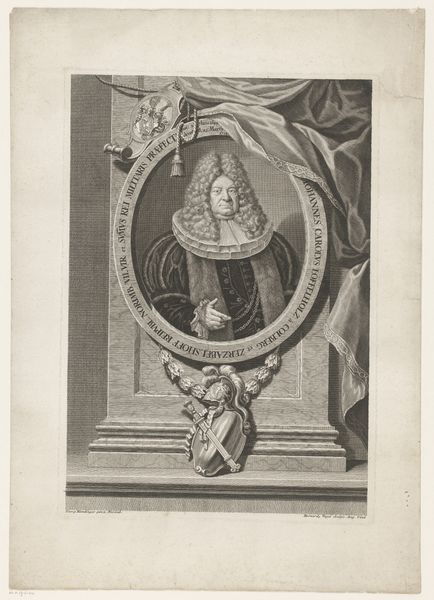
print, engraving, architecture
#
neoclacissism
#
allegory
# print
#
form
#
column
#
line
#
history-painting
#
engraving
#
architecture
Dimensions: height 183 mm, width 135 mm
Copyright: Rijks Museum: Open Domain
Curator: This engraving, created by Juste Nathan Boucher between 1755 and 1782, is entitled "Tombe met zuil in nis," or "Tomb with column in niche." It currently resides here at the Rijksmuseum. Editor: It has such a stark, melancholic quality. The grayscale line work is very precise. There's something so classically somber about it. The lines create textures but at the same time reinforce a sense of flatness, as if the grief it depicts is immovable. Curator: Indeed. The meticulous engraving work and neoclassical style serve to elevate what would otherwise be a very simple subject into an allegory on mortality and memory. Note the carefully rendered architecture that frames the tomb and reinforces the themes of permanence and remembrance. Editor: And those weeping figures, draped across the tomb, seem to emphasize human frailty against that architectural solidity. Do you see them as embodiments of grief, or perhaps more stylized symbols? Curator: It’s complex. Boucher plays with both, I think. He uses a formalist vocabulary of line and form but nods to history painting, aligning those symbolic forms to narratives of mourning. I suspect, through its inherent duplication as a print, this image also served a function, reaching and resonating with broader public sentiment. Editor: That's interesting—that neoclassical order is overlaid by emotional symbolism. Also, consider the gaze—there's nothing to see beyond this image of grief, it's almost self-referential, a complete system unto itself. The oval shape almost feels claustrophobic. Curator: Agreed, the closed-off composition pushes its viewer to really think about the concept and symbolism of mortality that was coming into focus throughout 18th century Europe. How this idea shaped individuals and society in turn. Editor: So while stark, and emotionally barren on first view, the art piece rewards a slow look by drawing upon layers of classical imagery and social and cultural relevance. Curator: Precisely. Boucher's technical skill is matched by a sophisticated awareness of his historical context. The composition creates both depth and commentary.
Comments
No comments
Be the first to comment and join the conversation on the ultimate creative platform.
